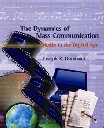 |  Dynamics of Mass Communication: Media in the Digital Age, 7/e Joseph R. Dominick
Perspectives on Mass Communication
Main Points- Functional analysis holds that something is best
understood by examining how it is used.
- At the macro level of analysis, mass media
perform five functions for society: surveillance,
interpretation, linkage, transmission of values,
and diversion. Dysfunctions are harmful or
negative consequences of these functions.
- At the micro level of analysis, the functional
approach is called uses-and-gratifications
analysis.
- The media perform the following functions for the
individual: cognition, diversion, social utility, and
withdrawal.
- The critical/ cultural approach has its roots in
Marxist philosophy, which emphasized class
differences as a cause of conflict in a society.
- The critical/ cultural approach suggests that media
content helps perpetuate a system that keeps the
dominant class in power. It also notes that people
can find different meanings in the same message.
- The key concepts in the critical approach are text,
meaning, hegemony, and ideology.
- Although they are different approaches, both
functional analysis and critical/ cultural studies
can be valuable tools for the analysis of the mass
communication process.
|
|



 2002 McGraw-Hill Higher Education
2002 McGraw-Hill Higher Education